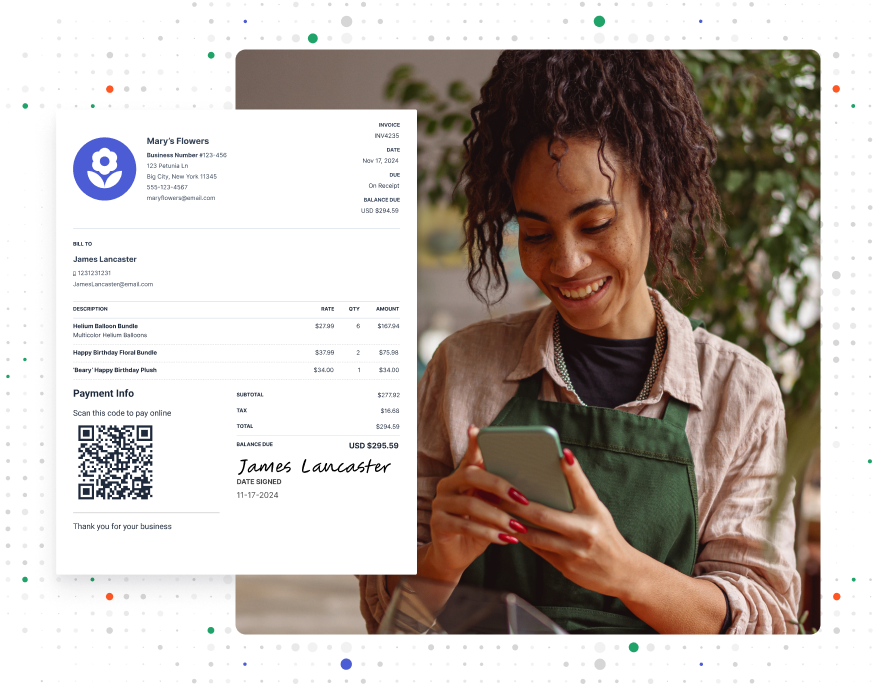The 8 Best Email Marketing Platforms for Small Businesses

Email marketing is crucial for small businesses. It can help convert prospects, upsell current customers, and protect retention.
That’s why selecting the right email marketing platform is so important.
In this guide, we’ll give you an overview of email marketing services. We’ll discuss why small businesses need them and the top email platforms today. We’ll also cover the latest trends and what features to look for when picking a product.
What Are Email Marketing Services?
Email marketing services are software platforms that allow you to create, send, manage, and measure your campaigns. They are a crucial part of your marketing tech stack and have many different features.
The most common features include:
- Pre-made templates you can customize
- The ability to segment your email lists
- Tools to design the email
- Automation options for sending emails based on triggers (e.g., a content download, general inquiry, welcome emails)
- Analytics and reporting to track performance metrics like open rates, click-through rates, conversions, and unsubscribes
Email marketing services can be part of a larger marketing automation system or be their own application. If the latter, most integrate with other technology.
RELATED ARTICLE — What Is Customer Acquisition? Strategies and Costs
Why Your Small Business Needs Emailing Services

Marketing by email can be a powerful tool for your brand. A survey of small business owners found that 53% of them use email marketing as their most frequent channel for customer acquisition and retention.
The same study reported that email marketing takes a lot of time. It was named among the top five most time-consuming channels. As a result, marketers often neglect it as a channel, and its potential as a driver of engagement tumbles.
Knowing its value but not being able to prioritize it means you need email services.
With an easy-to-use system, you can devote less time and get better results. There are many more reasons to use email services, including:
- The effectiveness of using technology: It can help you personalize emails and keep communication consistent. This can lead to more new customers and stronger ties with current ones. A great platform also removes a lot of manual work, so you’re more productive.
- Affordability: The best emailing software doesn’t have to be a budget crunch. Many platforms are cost-effective. There are also lots of free options that still have lots of features.
- Accessibility: Emailing services don’t require a lot of technical knowledge. Many guide you through the process. It may only take a few hours to get up and going.
- Personalization: The best email marketing platforms for small businesses support personalization. It’s an important part of getting people to engage. They are more likely to respond when the email is relevant.
- Improvements in deliverability rates: If emails don’t end up in the inbox, that’s a problem. Email marketing services help with this.
- Performance analytics: Simple, transparent reporting offers insights into your email campaigns. You can learn what promotions resonate with customers. It can help you identify which version of messaging had the best response rate, too.
FROM OUR PARTNERS — The Small Business Marketing Tools We Can’t Live Without
What to Look For in an Email Automation Platform
Email automation platforms include lots of features. Most of these are standard, but not all systems have all the capabilities vital to small businesses.
It’s essential to learn about these and why they matter. You’ll want to seek out these features as you search for the right email marketing services.
- Template library: Does the solution offer lots of templates that are easy to customize? Does it also have free stock images?
- Drag-and-drop design: Is the user interface simple and easy with drag-and-drop features?
- Email lists: Can you create many different lists? How easy is it to define these? Are there any limitations? Are dynamic lists available (these are lists that automatically update based on actions)?
- Sign-up forms: Can you create different forms to grow your email list? How easy or difficult is it to add these to your website?
- Customer segmentation: Can you segment audiences based on criteria? Do the options include demographics, industry, behaviors, or past purchases?
- Transactional emails: Can you send these one-to-one messages after someone interacts with your business? Examples include order confirmation, shipping notifications, or subscription purchases.
- Email automation workflows: How easy is it to set these up? Can you trigger automations after someone visits your website, makes a purchase, or completes a form?
- Integration with other apps: Can the platform integrate with other technology like a customer relationship management (CRM) system, social media tools, an e-commerce store, or other marketing app?
RELATED ARTICLE — How to Build Your Social Media Ads Strategy: Essential Tips
The 8 Best Free Email Marketing Platforms for Your Small Business

As you continue your email services evaluation, it’s time to look at the best free ones on the market. Keep in mind that free options may have limitations on features, how many contacts you can have, or the number of emails you send each month.
Let’s review the best use cases for these platforms, their best features, and what you get with free plans.
MailerLite
- Best used for: Growing email lists with forms, abandon cart emails, and transactional emails.
- Best features: Automation, personalization, e-commerce integration, multi-language support, drop-and-drag editor, and landing page creation.
- What you get with the free plan: 12,000 monthly emails, up to 1,000 subscribers, an email automation builder, 10 landing pages, sign-up and pop-up forms, and comparative reporting.
Brevo
- Best used for: Companies with limited resources and those that prioritize list building, automation, and multi-channel marketing.
- Best features: Drag-and-drop design, audience segmentation, personalization, A/B testing, send time optimization, automation, templates, and AI assistance for content creation.
- What you get in the free plan: 300 emails per day, customizable templates, transactional emails, and SMS/WhatsApp campaigns.
Mailchimp
- Best used for: Simple emailing and small businesses that need lots of integrations, automation functionality, and more robust reporting.
- Best features: Drag-and-drop email builder, lots of templates, A/B testing personalization, and reporting.
- What you get in the free plan: 500 contacts, 30 days of support, 1,000 sends per month, pop-up forms, and limited reporting.
Sender
- Best used for: Companies that want to combine email and SMS campaigns, easy automation, and data-driven segmentation.
- Best features: Drag-and-drop email builder, free templates, custom HTML editor, and pre-built automation workflows.
- What you get in the free plan: 2,500 subscribers, 15,000 emails monthly, automation, newsletters, and pop-ups.
Benchmark
- Best used for: E-commerce and retail businesses, improvements in deliverability, and streamlined automation.
- Best features: Smart Design AI, lots of ready-to-use templates, and e-commerce integrations.
- What you get with the free plan: 500 contacts, 3,500 emails a month, forms, and reports.
Kit
- Best used for: Creators (e.g., authors, influencers, musicians), newsletters, and deliverability optimization.
- Best features: List segmenting by tags, templates, streamlined automation, and actionable insights.
- What you get with the free plan: 10,000 subscribers, basic visual automation, email sequence, unlimited landing pages, audience tagging and segmentation, and API access.
Klaviyo
- Best used for: E-commerce automation, goals for increasing revenue, SMS integration, and product recommendation.
- Best features: E-commerce integrations, advanced segmentation and automation, and predictive analytics via AI (e.g., customer churn risk).
- What you get with the free plan: 500 monthly email sends, 150 SMS credits, a reporting dashboard, and 60 days of support.
Campaign Monitor
- Best used for: Email marketing beginners, transactional emails, and automation.
- Best features: Email templates, intuitive design interface, integration with SMS, smart segmenting for personalization, and a review tool to check your links.
- What you get with the free plan: 500 contacts, 500 emails, a drag-and-drop builder, template library, segmentation tools, and an image gallery (Note: The free plan is only for 30 days).
Learn more about Campaign Monitor.
Tips on Trends To Look For in Emailing Software
As you review the best email marketing platforms for small businesses, you also want to know how each system responds to trends.
Email services are evolving, and you want your provider to have features that align with these. Otherwise, performance may wane.
Some trends to watch include:
- Personalization with AI. Some of the reviewed platforms have AI tools. AI can analyze customer data to support smarter segmentation and more relevant messaging. It’s also great for identifying insights in performance analytics.
- Interactive email content. Emails with interactive elements like surveys, polls, and quizzes can boost engagement. A platform with these capabilities helps you leverage this trend.
- Privacy and data protection. Consumers are more aware of data privacy concerns. They will provide their information, but they need to know you’ll store it safely. Make sure you are compliant with any regulations and use a platform with advanced security measures.
- Omnichannel integration and customer experience. Email marketing is only one marketing channel you can use. When it integrates with social media, SMS, and in-app notifications, the customer experience is seamless and consistent.
- Voice-activated email interactions. This emerging trend allows voice assistants to read emails. Optimizing for this lets users engage with emails at their convenience. For consumers who are using this to weed through the inbox, your content can stand out when it’s ready for voice assistants.
Where to Start with Email Marketing Platforms

- Review all the platforms and determine if their offered free versions have enough features.
- Compare pricing of options if free doesn’t have what you need.
- Prioritize the functionality most important to your business.
- Consider how email services can work with other marketing efforts like social media ads and business reviews.
- Analyze the gaps in your current system if you have one.
- Look at integration capabilities and if they match your needs.
Start Your First
Invoice Today
Create customized and professional
invoices and connect with clients
